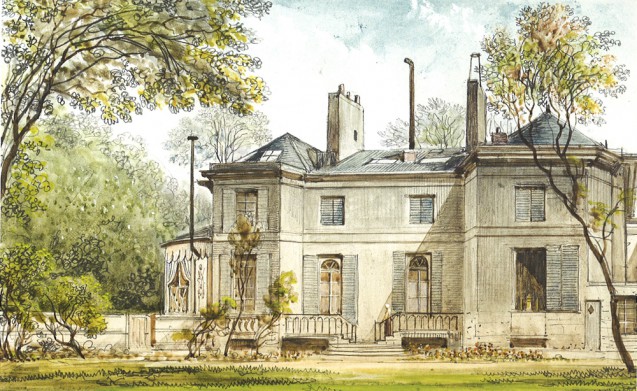Turning off the Rue Chantereine in October 1795 and continuing down a long driveway formed by the walls of the adjacent properties, Napoleon Bonaparte would have found himself at the modest private residence in which Marie-Joseph-Rose de Tascher de la Pagerie lived. Their romantic entanglement began within these walls (appropriately enough, since Josephine was renting the property from actress Julie Carreau, mistress of the Vicomte de Ségur, who had built it for her). It was from here that Napoleon and Josephine were married on 9 March 1796; to here that Napoleon returned after his victories in Italy and Austria (the Rue Chantereine was renamed the Rue des Victoires in his honour); and here that the Coup of 18 Brumaire, which catapulted him to power, was masterminded.
In spite of its importance during the First Empire, the Hôtel Bonaparte, as it became known, did not survive the Second Empire’s building projects: it was demolished in 1862 to make way for the present Rue de Châteaudun. Gustave, Comte de Reiset’s watercolour drawing is one of the few images to document the Hôtel before its destruction (an inscription on the verso notes that Reiset made this drawing in 1856, just six years before the Hôtel was finally torn down). Although his watercolour captures the lush vegetation surrounding the Hôtel Bonaparte, the house itself has a melancholy air, with its shutters closed or curtains drawn, and none of the life that must once have inhabited its rooms in evidence. Indeed, this was one of the most lavishly decorated and stylish house in Paris. Napoleon himself declared that “[Josephine’s] house was the best in Paris”, although he was, on occasion, appalled by the expense of her taste: he confided to Las Cases on Saint Helena, “That house wasn’t worth more than 40,000 francs. Imagine my surprise, my indignation and my horror when I was presented with the bill for the salon furniture, which didn’t seem to me to be anything special but which came to the enormous sum of 120,000 to 130,000 francs.”
But Josephine was the Parisian hostess par excellence and it was here, in the salon of the Hôtel Bonaparte, that the great and the good assembled, here that they gathered to discuss and indeed shape the nation’s political destiny. Yet Reiset’s drawing is a record of loss, not plenitude. The only figure to inhabit his pictorial space is a woman (a servant, perhaps, in cap and gown?) on the Hôtel’s front steps, who could almost be a ghost from the building’s past. If we see, on the building’s left, the celebrated vestibule tent, once striped in blue and white and the heart of the Bonapartes’ social world, in front of Reiset’s eyes it has faded to the same greyish beige as the rest of the house, its glory days behind it.
Written by Francesca Whitlum-Cooper (November 2014)


